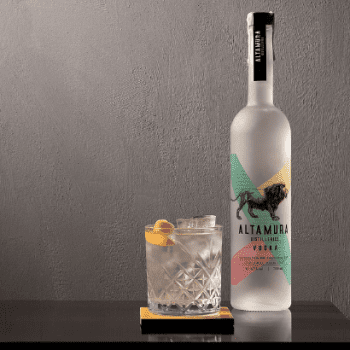Altamura Distilleries plans gin and whisky
The managing director of Italy’s Altamura Distilleries, Frank Grillo, discusses how the company is using local wheat to create vodka, and its plan to move into gin and whisky.

Located in the Puglia region, Altamura Distilleries recently launched its vodka in the UK.
The wheat used to make the vodka has been grown in Altamura or the adjoining communes of Puglia in Italy for more than 2,000 years.
Local wheat varieties such as Appulo, Arcangelo, Duilio and Simeto are known for their hardiness and complexity of flavour.
Grillo said: “The original thought about Altamura Vodka was if you boiled a loaf of bread, you could drink it rather than eat it, so the mission was to let people experience Altamura in a liquid format, rather than a dry one.”
Altamura Distilleries has sourced its wheat through the ‘godfather of grain’, Andrea Cappiello. The third generation to farm the fields of Altamura, Cappiello’s instinctive knowledge of his crop, accumulated over decades of hard graft, gave him the confidence to participate in the project: “If you can make the best bread in the world, you can make the best vodka.”

Distillery plans
At present, the spirit is distilled in Poland using a contract distiller, but there are plans to open a gin and vodka distillery in Puglia.
Grillo explained: “Here [in Puglia] we’re going to first build out the gin distillery and then the vodka distillery. We didn’t know what reception the product was going to get, so we’ve started with a contract distiller to get set up. We ship all the wheat from Altamura to Poland and then ship the vodka back to Italy.”
The vodka is triple distilled and filtered five times through charcoal, Grillo added.
Altamura Vodka is currently available in India and the UK, and will soon launch in the US. “The good thing about vodka is it is the ‘little black cocktail dress’ of spirits,” Grillo said. “It is consumed almost everywhere and can be easily adopted.
“Brand Italy sells really well in Asia. Italian products are regarded as high quality, and given the provenance of Altamura wheat, that authenticity really helps us in markets that like Italian products.”
It might be suggested that the sanctions against Russia, and its vodka, in many western countries in response to the invasion of Ukraine might be advantageous for a new vodka brand looking to gain traction. However, Grillo pointed out: “We slot right against Belvedere and Grey Goose, and there isn’t really a Russian product in that category. It’s those brands that own what I like to call the ‘€15 Martini market’.”
Grillo also recommends serving the vodka in a Martini: “I’m a bit of a zealot about this – a 1940s three-to-one ratio with a really great vermouth and, in the style of The Savoy, a dash of orange bitters.”

He also pointed out that Altamura Vodka has an umami character that works well with the olive brine of a Dirty Martini.
New products
But Altamura Distilleries is not stopping with using Pugliese wheat for vodka, Grillo disclosed: “There will be two gins; a London Dry, and one more geared towards a Negroni, which has a little less juniper and more burnt orange aroma so that it works with the Campari and vermouth.
“We will also produce what would be known in American parlance as a wheated ‘Bourbon’ and a wheated rye whisky, though we can’t call them this, using 51% corn and 49% Altamura wheat and 51% rye and 49% Altamura wheat. Matured in charred new oak for four to five years. We haven’t got a name for them yet, we’ll have to come up with the ‘méthode traditionnelle’ of Bourbon.”
Related news
